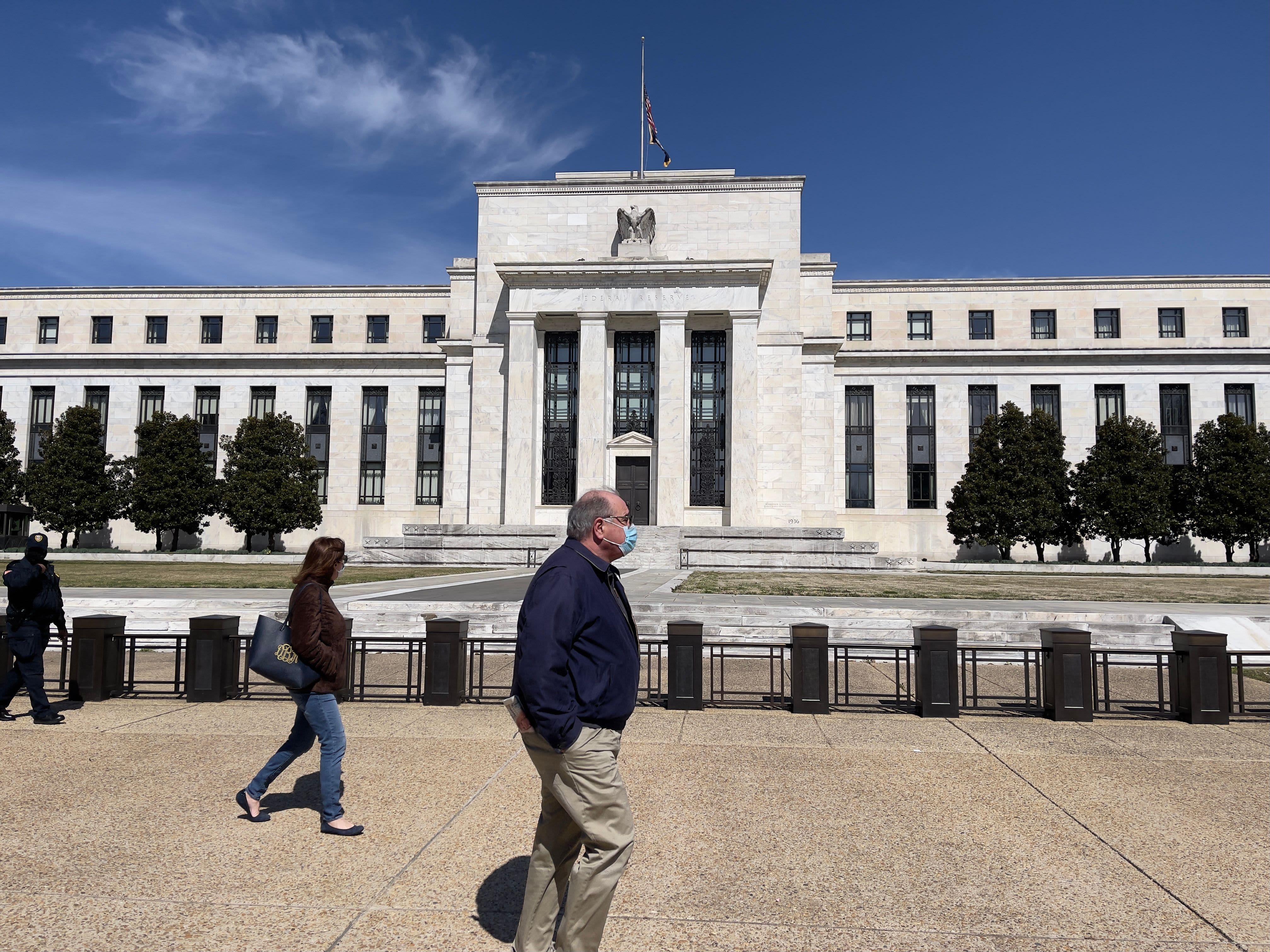
People walk past the Federal Reserve building on March 19, 2021 in Washington, DC.
Olivier Douliery | AFP | Getty Images
As inflation escalates, traders are expecting a more aggressive response from the Federal Reserve than policymakers are currently indicating.
The market Thursday morning briefly priced in a slightly better-than-even chance that the Fed hikes interest rates three times in 2022 as price pressures increase. In their most recent economic projections, Fed officials indicated a slight tilt to a hike next year, but only one.
Traders see a 65% chance of the first hike coming in June, the second as soon as September (51%), and a 51% likelihood of a third move in February 2023, according to the CME’s FedWatch tool. The most recent probability for December 2022 was 45.8%, but it had been above 50% earlier in the morning.
The switch comes with inflation as measured by the consumer price index excluding food and energy increasing 4% year over year, and up 3.6% as measured by personal consumption expenditures prices.
That 0.4 percentage point gap between “core” CPI and PCE, the latter being the Fed’s preferred measure, is likely to expand in the coming year due to rising shelter prices, according to Goldman Sachs.
A gauge of shelter costs which measures the level of rents property owners could get for their dwellings makes up 23.6% of PCE, part of the overall shelter category that comprises about one-third of the popular inflation gauge.
While owners’ equivalent rent increased just 2.9% on a year-over-year basis in September, it is expected to accelerate into next year and broaden the gap between CPI and PCE.
Goldman said the spread also will expand because of rising auto prices that could take a while to fall, and a “spike” in health insurance costs as calculated in the Labor Department’s CPI. The Commerce Department measures PCE prices.
In all, the firm forecasts CPI inflation to register in the mid-5% range to start 2022 before drifting down to 4% by mid-year and 3.1% by the end – still about a full percentage-point above the Fed’s favored measure.
“While the PCE index is the Fed’s preferred inflation measure, Fed officials look at many measures, and it increasingly appears that the full set of inflation data will look quite hot on a year-on-year basis around the middle of next year when tapering ends,” Goldman economists David Mericle and Spencer Hill said in a note. “As we noted recently, this increases the risk of an earlier hike in 2022.”
The majority of Fed officials who have spoken on inflation say they think it’s temporary – “transitory” is the preferred term – and likely to clear up once supply chain issues have dissipated and demand for goods over services.
Markets will get another look at the Fed’s primary inflation gauge Friday, with the Dow Jones estimate for a 3.7% year-over-year core PCE increase in September.




